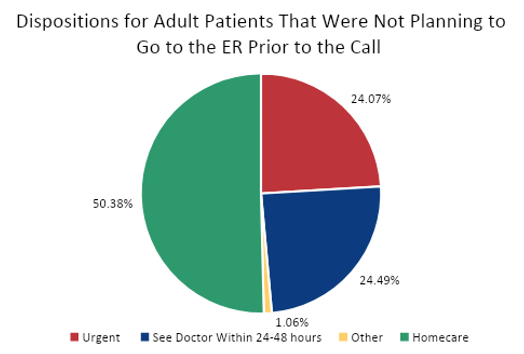How does telephone nurse triage actually work? This is a common question we receive when implementing a nurse triage system. In this article, we cover the entire phone triage process from when a patient calls a nurse, to when a nurse relays the information back to the doctor. There are five steps in our URAC accredited health call center process. Nurses ensure that all callers receive standardized, high-quality care by using gold standard protocols from Schmitt-Thompson.
First, an individual calls their doctors office or a dedicated number, requiring triage assistance. The call gets forwarded to an operator who collects the individual’s information, including name, age, and name of their physician. The operator then relays the information to a licensed registered triage nurse. In some cases, if the caller appears to have a serious symptom, the operator is prompted to ask further questions that will bump the request higher on the call list queue. This ensures that a triage nurse will assess the call quickly and efficiently.
Second, the nurse receives the information about the caller and calls the patient back. The nurse goes over the symptoms as well as some more detailed relevant medical history.
Third, upon review, the nurse then selects the applicable Schmitt-Thompson protocol and assesses the caller’s symptoms via a checklist. This prompts the nurse to ask further questions and then to determine the appropriate level of care for the patient. During each call, the information about the patient, the patient’s disposition, and the triage protocol used by the nurse is documented in our system.
Fourth, as the nurse handles the call, she relays the disposition information to the patient and documents her notes in the system. The nurse also ensures patient safety by making sure the patient is comfortable with the instructions and understands the steps for follow-up care.
Finally, our system relays the caller’s information and the disposition to the physician’s office. This can be done via fax, email, or online access to notes. There is also an option for HIPAA-compliant secure text messaging, which allows nurses to send a call summary straight to an MD’s smartphone when a physician needs to be informed immediately. The secure text messaging system also allows nurses to know when a physician read the message
All calls are recorded, and call back times are an average of 9 minutes. Emergency calls are responded to within 5 minutes.
An important function of telephone nurse triage is directing patients to the appropriate level of care. Patients don’t always know if their symptoms are signs of a serious medical condition. Telephone triage nurses can assess which patients need urgent medical care using standardized protocols. Telephone nurse triage thus provides a safe way to direct patients to the right level of care and save lives
In order to assess the benefits of our triage process, patients are also asked to complete a survey during the triage call. Patients are asked to answer “Yes” or “No,” indicating whether or not they were planning to go to the Emergency Room prior to the call.
Here is a summary of patient dispositions from January 2020 to October 2020 in response to whether or not patients were planning to go to the ER. The following graph presents dispositions for patients who were not planning to go to the ER prior to the call.

Dispositions for patients who were not planning to go to the ER prior to the call.
We find that patients are likely to underestimate the severity of their symptoms. About ¼ of patients who were not planning to go to the ER were told to seek urgent medical attention.
Click here to create an account, and you will have access to the full spectrum of Covid telephone nurse triage care. The Schmitt-Thompson disposition protocols aid our nurses in providing quality care to patients. We also offer free courses for nurses in our Learning Center.
Contact us today to set up a nurse triage system for your patients. We will discuss your needs and set up a customized plan that works best for your organization and your patients.





